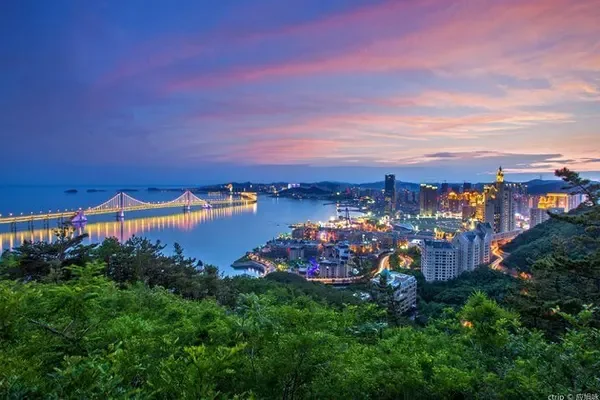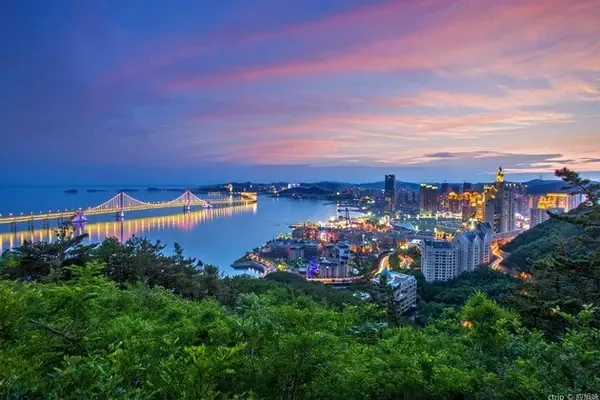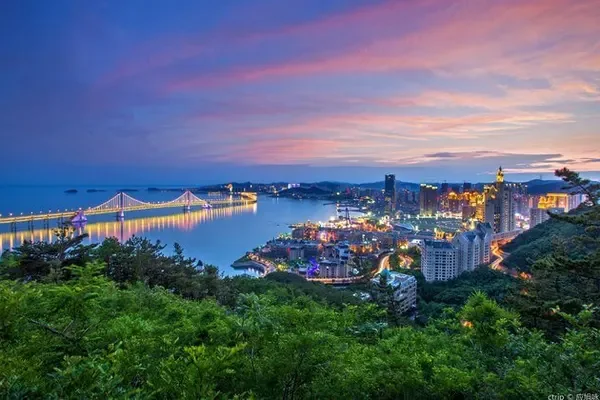Beijing
A city that never lacks topics
Self-contained hot search physique
someone said
Beijing is China's New York
Because it has a kind of freedom deep in the soul
because it has just the right amount of narcissism
Because it has tolerance that penetrates into the bones
Because of its incomparably diversified value orientation
Beijing
It may be a city that you will not like at first sight
But it must be that you want to know more about the city you have integrated into after you have been in contact for a long time

this time
I want to take you to see the red bricks under the hands of Mr. Dong Yugan
I want to take you to see the galaxy designed by the devil in architecture
I want to take you to the homes left by the most frugal billionaire Kamprad
I want to experience the feeling of home dressed up by amateurs with you
I want to appreciate the combination of Beijing and Hong Kong culture from south to north with you
Red Brick Art Museum|Red Brick on the Left Hand Garden on the Right

▲I want to give a lot of compliments to the red bricks, to this soft garden-style art museum that presents a Chinese style. The combination of red bricks and blue bricks in different styles does not seem to be inconsistent here, and they flaunt their own style unscrupulously. Temperament attracts various exhibitions here, quietly waiting for batch after batch of people who come here to watch.

▲The uniform box will make you feel that this is a building with a strong sense of ceremony.

▲Small red bricks of different heights are scattered around the amphitheater after entering the arena, for people to rest.

▲The large floor-to-ceiling windows echo the entire red brick outside the window, creating a timed movie scene. As long as you stay there, it is a frozen scene.

▲The perfect interlacing of light and space makes every corner of the Red Brick Art Museum a scene. You can't help but imagine what the four seasons look like here, and what the scene is like every moment when the sun rotates from east to west. In the process of shooting portraits, it is rare to use the direct flash method. Generally, the bounce flash is performed with the help of a reflective umbrella or wall reflection. This not only achieves the effect of fill light but also makes the light of the flash more soft and natural. , This time I used Speedlite470EX-AI. This flash does not need to manually adjust the jumping angle and flash output of the on-camera flash, which solves the choice of light output and jumping angle to a large extent.

▲ Walking out of the exhibition hall to the backyard, there are many stairs that can be climbed. You can experience the fun of climbing on the roof when you were a child. Red bricks and blue bricks also started their transition here, from the unpredictable changes of light and shadow to Jiangnan The charm of the garden.

▲The moon gates connected to each other are places where red bricks must punch in. The interlacing of light and plants is vividly expressed in the green brick garden.

▲ Walking on the red bricks at three or four in the afternoon, you only need to turn your head, and the sun will kiss your cheek. When the side is backlit, press the AI.B button, and the Canon 470EX-AI will automatically complete the light metering. It is very convenient that after lightly pressing the shutter halfway twice continuously when the horizontal shooting changes to the vertical shooting, the 470EX-AI will automatically complete the metering. AI adjusted the jumping flash angle according to the vertical shooting state of the camera.
Art | Those niche exhibitions that stay quietly in the red brick
▼I don’t know when the niche craze became popular. People began to be keen to pursue some niche things. I am also a member of this group of people. I don’t have a strong artistic cell, and there are only inner scenes. Drama, has a paranoid pursuit of fields that I don't understand, and art exhibitions are one of them.

▲The little sun that exploded in Moments is one of the works in this exhibition~

▲The use of single-frequency lights turns all the colors entering the room into yellow-gray, creating a sense of magic in "Blade Runner 2049".

▲Japanese artist Izumi Kato's first large-scale solo exhibition in China - Izumi Kato's "Untitled" fabric series

▲The works of Izumi Kato have distinctive characteristics—the outlines are universal, sometimes androgynous, with slender limbs and strange postures. They are integrated with plant attributes, as if they originated from the spiritual world of heresy, and they also have the original power of growing in the land.

▲These universal and vivid visual images are independent of the visual art history of the dualism between the East and the West, and present a view of nature derived from local culture and religious attributes. In the artist's fictional world, these creatures are both friendly and strange. Standing quietly in front of the audience in various forms.

▲In the corridor that goes up the steps, the photographs of Andreas Muai are lined up on the wall.

▲The steps are always a good place to take pictures. Every time you turn around the steps, you feel like you are on the Avenue of Stars.

Galaxy SOHO | If you can’t see the stars, I’ll take you to the Milky Way~
▼The Milky Way in Beijing is at the southwest corner of Chaoyangmen Bridge on the East Second Ring Road. When night falls, the poi/5423316.htmlGalaxy SOHO is shrouded in thin white light, like several spaceships ready to take off at any time, about to go to the depths of space at...

▲Roundness and flow are the main design of Galaxy SOHO, giving people a soft sense of tranquility.

▲ Opposite Galaxy SOHO is Chaoyangmen SOHO. The office building can be entered and exited freely, and the sixth floor is a good base for taking reflections.

▲The works of the SOHO series are always full of sense of design, which is different from the previous lattice rooms. When you look out through every glass, it seems that you can see the future.

▲Zhaha's buildings always have endless angles to shoot, even if it is a familiar place, new things can be unearthed.

▲ Walking in Galaxy SOHO, you can't help but be attracted by its mysterious atmosphere. The night light is weak, after installing the flash on the camera, the only thing I did was to switch the Canon 470EX-AI to the fully automatic mode, and then press the AI. AI performs any manual intervention, and the shooting is completed in a fully automatic mode.

▲Most impressions of the imperial capital are square. In a straight-line city, curved buildings are always unforgettable.
IKEA | This city is very windy, people who return late must have a home
▼In 1998, IKEA entered China and opened its first store in Xuhui District, Shanghai. In the blink of an eye, 20 years have passed, and IKEA has 25 stores across the country. Today, IKEA is a collection of home shopping, eating and resting, and by the way, you can also meet Dear internet celebrity check-in place, it is also a good place where we can spend most of the day wandering.

▲The structure and layout of IKEA in each city are similar, and the warehouse-style store at the bottom has become a check-in base for major photographers because of its simple industrial style.


▲It seems that the piles on both sides are not commodities, but the appearance of home in everyone's mind.

▲The big shopping cart can hold your longing for home.

▲ IKEA says IKEA is your home.

▲Have you ever wondered what your home looks like?

▲It seems that everyone will experience a period of confusion about what home is.

▲And now I seem to understand that home is a place where you can rest assured.

▲ IKEA, which is famous for its experiential marketing, always makes people feel how wonderful it would be if my home became like this through store layout and space display
Homestay|It's a gentle township, it's a whispering tenderness
▼The homestay has become popular in recent years, and it has become a new place where you can stay in the hotel and take pictures.

▲When choosing to live in a homestay, I always prefer LOFT. Indoor shooting also uses a lot of light. This time, I installed the Speedlite470EX-AI, a sharp tool for portraits. Press the AI.B button to automatically measure the distance of the shooting and the distance of the flash, and automatically adjust the angle of the flash. After the actual shooting, I was somewhat amazed by the photos I got. There is almost no underexposure or overexposure in the exposure.

▲I like rooms with attics, the warmth of wood, the dotted lights, the tenderness of pink, and you.

▲The city will generously light up the night light for people, so that people who return late will not get lost.

▲And I prefer the little lights in the house, which makes people feel at ease and comfortable. In this actual shooting process, the fully automatic mode of the Canon 470EX-AI flash can easily start shooting even for a lighting novice, so it will give the photographer enough sense of security and let the complicated flash adjustment made easy.

▲The stars that cannot be seen in the city, let's look upside down on the sofa.

▲I feel that light is a very magical thing, and bright places are always yearning for people.

▲The light held in the palm of your hand is like love, like warmth, and it is hope.
Beijing-Hong Kong MTR Di is the Hong Kong-style subway card of the Imperial Capital
▼This is Beijing, which has a history of more than 3,000 years as a city and a history of more than 857 years as a capital.
This is Beijing, and this is a rough city, but there is also a tolerance that penetrates to the bone.
Even a subway line can perfectly combine the history of the imperial capital with the style of Hong Kong without making you feel awkward.

▲ Di confirmed that the platform is Line 4, that’s right~

▲Beigongmen means the north gate of the Summer Palace. During the Qianlong period, it was the main entrance of Qingyi Garden. Facing south and facing north, it is a two-story gatehouse with a width of seven rooms. Because the south of Qingyi Garden is Kunming Lake, there is no gate, so it is regarded as The north is up, so the palace gate on the north side is the main gate, which is called the North Palace Gate.

▲In the Ming and Qing Dynasties, Zhongnanhai was called Xiyuan, and Changchun Garden was called Xiyuan in Kangxi. What we call Xiyuan now is generally called Haidian Yuanmingyuan, Summer Palace, Yuquan Mountain and other royal gardens.

▲Xinjiekou in Beijing has a longer history than Xinjiekou in Nanjing, as early as the early Ming Dynasty. Xinjiekou, Beijing was a water transport wharf on the Grand Canal during the Yuan Dynasty. There was a water area called Jishuitan. At that time, water transport was the most developed mode of transportation, so this area was very prosperous, similar to the area around the railway station today. After the baptism of history, the current Xinjiekou is not as prosperous as it used to be, but there are still places worth exploring. For example, get out of the southeast exit of Xinjiekou Station on Line 4 and walk 300 meters to the east. There is a magnificent Chinese bookstore. Friends who like old books can come here to shop~

▲Taoranting is a famous pavilion in the Qing Dynasty and is now one of the four famous historical pavilions in China. Taoranting Park and Taoranting area are named after this pavilion. Taoranting Park is the earliest modern garden built by the Beijing Municipal Government after the founding of the People's Republic of China. The famous Taoranting, Cibei Nunnery and other buildings are located here.

▲Pinganli was called Taipingcang in Ming Dynasty, and it was Zhuangwangfu in Qing Dynasty. It was destroyed by fire in 1900. It is said that someone once dug out gold here. In order to obtain the treasure, Li Chun, a warlord of the Republic of China, and his younger brother bought this palace from the last Prince Zhuang. However, no treasure was dug up when the old buildings of the palace were demolished, and then a house was rebuilt here. It is generally called Ping'an Lane.

▲ Majiabao (Pù) is located in the southwest of Beijing. Historically, it was a famous village in the south of Beijing. It is now an administrative village in Nanyuan Township. Majiabao is the earliest main railway station in Beijing, and it is also the place where trams were first connected. Majiapu was originally called Majiapu, Putongbao, originally a post station. Majiabao became a village around the end of Ming Dynasty and the beginning of Qing Dynasty. It is a big village. Located in the south of the capital, it was close to the enclosure wall of the Nanyuan Royal Garden in the Qing Dynasty. Majiabao was in the northwest of the enclosure. There were 13 corner gates in Nanyuan. The corner gate of Nanyuan is gone, only the place name of Majiabao Corner Gate (simplified to Jiaomen today).

▲Jiaomen is located 3 kilometers southwest of Yongdingmen in Fengtai District, Beijing. Jiaobao Village in the west of the village was the northwest corner of the Nanyuan wall at that time. Different from the nine gates (such as the South and North Dahong Gates) that the emperor used to enter and exit, the corner gate has only one small gate and one door. The place names of Jiaomen and Jiaobao are a sign of the scope of the Nanyuan wall.

▲It is said that Gongyizhuang was originally called Gongjizhuang. In the late Qing Dynasty, an official surnamed Gong once enclosed a hundred hectares of land here and hired dozens of people to cultivate it. It was called Gongji Manor. Later, as the area of the manor expanded, the number of people employed continued to increase, gradually forming a small village called Gongjizhuang. Around the 1920s and 1930s, Gongji Manor was gradually abandoned, and the farmland was continued to be cultivated by local villagers, so Gongji Village was homonymized as Gongyizhuang. In 2000, an overpass was built on the Fourth Ring Road to the northwest of Gongyizhuang, called Gongyi West Bridge.

▲Lingjing Hutong is located between Xidan and Xisi. It belongs to the Xidan commercial circle. It is a very prosperous area. It used to be the widest hutong in Beijing, with a width of 32 meters (the longest is Dongjiaomin Lane, the widest is Lingjing Hutong, The narrowest one is Xiaojiao Hutong). But the current Lingjing Hutong is no longer a hutong, because it used to be narrow in some places and wide in some places, but now the narrow places have been widened into a road of more than ten meters, and many residential buildings have been built on both sides of the hutong. So now this Lingjing alley has long existed in name only.
Be a person like yourself in the huge imperial capital
Glancing at the impressive 2018 on the calendar, I realized that I have lived in the imperial capital for four years. I don’t know how long I will leave. I just want to record my years in Beijing while I am still here, and I want to be a A collection to load your own years.



![[Recommendation for summer vacation] You can have a great time without leaving Beijing! 3 days and 2 nights from only 999 yuan](https://www.anyonetrip.com/uploads/202301/30/3e5f0372f2475af3.webp)